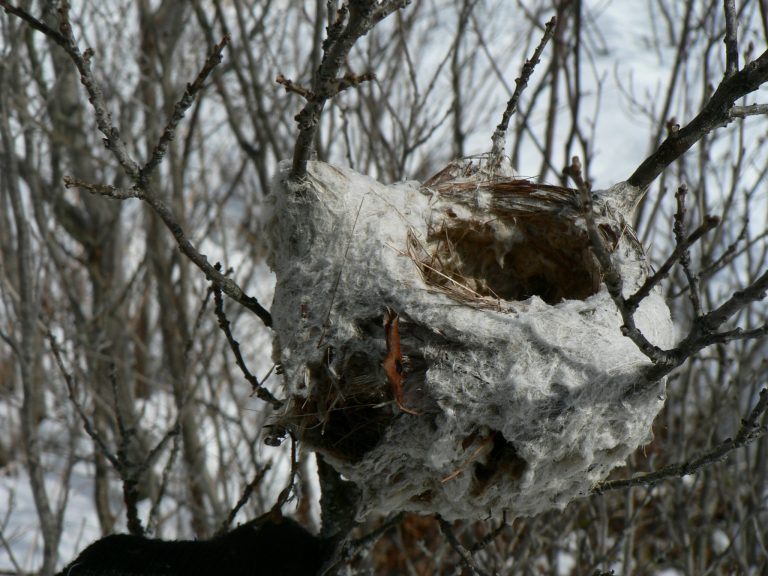Anyone who knows me knows I am not a huge fan of winter. In fact, that would be putting it mildly.
Given that humans have not evolved to hibernate through winter, I must figure out a way to make it through to springtime. And since I love spending time in nature, the long snowy months provides a unique, if sometimes challenging, opportunity to get out and explore our natural world. It also helps avoid cabin fever.
Snowshoes are my favourite mode of transport; they provide a relatively easy way to stay on top of the deep, fluffy white stuff or to travel along packed down trails. At first glance it may appear that our forests and fields are in a deep sleep, for those who take the time, nature can reveal much.
“While visiting the Thomas C. Agnew property and the adjacent Simcoe County Forest Turnbull Tract recently, there was an extensive network of moose hoof prints driven deep into the snow.”
One of the benefits of winter exploration is the abundance of animal tracks in the snow. While visiting the Thomas C. Agnew property and the adjacent Simcoe County Forest Turnbull Tract recently, there was an extensive network of moose hoof prints driven deep into the snow. At one spot on the trail it was obvious that the moose had stopped to nibble on balsam fir branches.
It was amazing to see that despite the deep snow, the moose (or several moose) had travelled several kilometres in search of food and shelter.
There was also evidence of deer moving about the forest although given harsh conditions this winter, they likely did not venture far from the safety of the dense hemlock stands. Other tracks crisscrossing the area were squirrels, mice, grouse, rabbits, and wild turkeys. One year, I followed a long track left behind by a porcupine. It must have taken a considerable amount of energy for this bulky creature to travel almost a kilometre from one location to another.
Although leafless deciduous trees may not seem interesting, there is much we can learn from their winter state. Each species has a distinctive bud and with a bit of training, we can learn to tell them apart. For example, basswood buds are reddish, fairly large with a slight bulge on one side given them a “pregnant” appearance.
Songbirds are very good at hiding their nests in the dense foliage of summer leaves but once this cover is gone in winter, these nests are easy to spot. Each bird species has its own fairly distinctive design and location for these nests. A careful inspection of these intricate creations reveals an engineering marvel of woven vegetation lined with softer material such as animal hair or moss.
On warmer days, you might be able to spot the miniscule “snow fleas” jumping across the snow. Not to worry, they are not actually fleas, but instead belong to the springtail family of insects. It is truly a wonder how high and far these tiny creatures can jump.
“On warmer days, you might be able to spot the miniscule “snow fleas” jumping across the snow.”
Our natural areas are not silent in winter either. The hardy winter birds such as chickadees can be heard calling in the forest. Woodpeckers make their presence known by skillfully drumming on diseased trees in search of insects. On breezy days, there is the welcoming lull of the wind rustling through white pine needles; hence the term “whispering pines.” If you are fortunate to be in a forest where beech trees are growing, look for the young saplings with last year’s dead leaves still attached. As these paper-like leaves brushing up against one another in the breeze, they sound like a string of Chinese lanterns on a patio on a summers day.
So while I still prefer a hike in the woods on a warm and sunny summer day, the cold and snow don’t stop me from venturing outside. There are still amazing natural wonders to discover in the winter for those who take the time to search for them.
Gayle Carlyle is a volunteer with The Couchiching Conservancy, a non-profit land trust dedicated to protecting nature for future generations.

